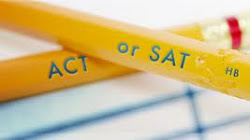Why are my SAT Math scores so low even though I am a good Math student?
High school math courses rely heavily upon homework. It is doled out daily, done mechanically by rote, and very few, if any of the problems are word problems. This is why so many students fear Physics and Chemistry classes. They may not realize it, but those classes and life after school are word problem based. The most common misconception about the SAT Math section is that it is primarily about Math. It is not. It is roughly 90% word problems, and as such, it is primarily a reading comprehension section. Math is secondary.
Chemistry and Physics should be easy classes because they describe the world as we experience it. We have so much first hand knowledge from our first breath to our drivers’ test, that physical sciences ought to be intuitive. In contrast, analyzing the poetry of Walt Whitman, learning a foreign language, or writing an essay about democracy and the helots of ancient Greece should be far more difficult than understanding gravity, friction, or acidity.
The inherent difficulty is in the words. Our Math and Science teachers take for granted that high school students know how to read a word problem. Teachers lack the time to address this critical step because they must teach new formulas and concepts in order to give their students the requisite knowledge they need to pass their impending quizzes, tests, and exams.
Students learn to read narratives at an early age. This is a different skill than reading a word problem. Word problems don’t have a back story or character development or even a denouement. The plot never thickens because it never exists.
Word problems are a set of instructions like a manual that tells us how to assemble a doll house. Insert tab A into slot B. Check! Onto the next instruction. Ultimately we assemble information into equations.
I have developed a method for reading word problems once to conclude with the correct answer. This is vital, because if a student has to read a word problem two, three, even four times before answering, they are essentially taking 90% of the test as many times. They will not finish the section in time. It is also likely that they won’t be sure if they are answering the question correctly or even understand the question being asked.
I would love to tell you more about how I teach this technique and what it entails, but it is so simple that every student learns it well and any teacher could teach it. I am sure you aren’t the only one reading our blog.
What I can tell you is that vocabulary plays a part and I have developed a list of SAT Math vocabulary that is complete and concise and all of it is found both in the SAT and the Skinny, WaveLength’s SAT study Guide.
After students learn my word problem method they have far more time to take the test and actually think about the Math. This relieves stress, minimizes careless errors and mental fatigue, and ultimately raises SAT Math scores to reflect or surpass school Math grades. There is an added bonus to all of this. Student Science grades will inevitably rise with out extra studying.
Read more about the ripple effect of our lessons and programs on our website under, Testimonials. Or for more details about our Math vocabulary and word problem method, Contact Us. Read carefully and keep practicing!
Here is an article that I happen to find fascinating: One Key Difference Between Kids Who Excel at Math and Those Who Don’t


